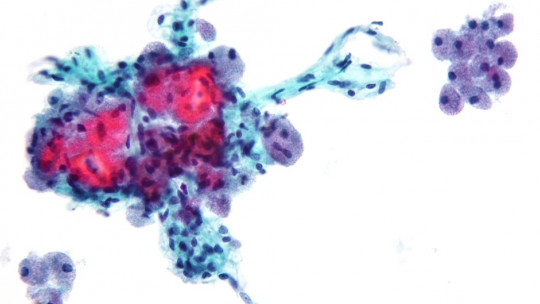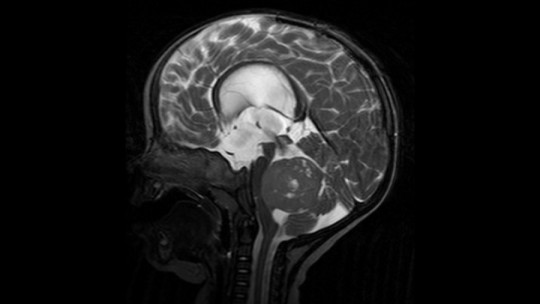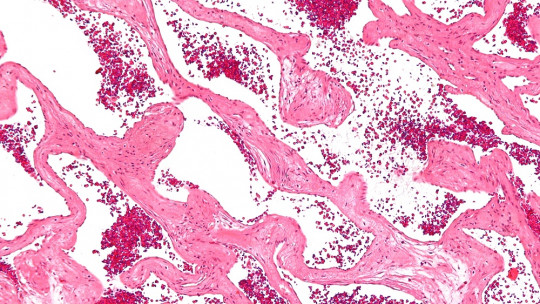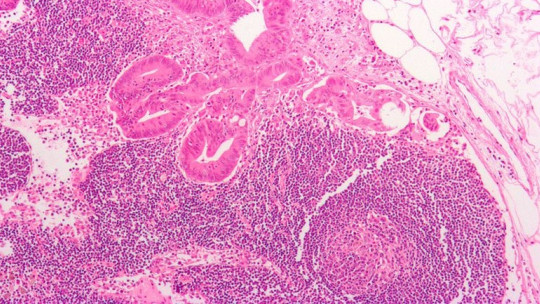The concept of neoplasia may not be frequently heard in our daily lives and in fact may seem unknown to many, but it refers to a very common reality that causes great concern in the population: we are talking about the formation of neoplasms, more known as tumors.
This is why the analysis and study of this type of alterations is of great importance, especially taking into account that cancer continues to be one of the main challenges in medicine and one of the most common causes of death today. In this article we are going to analyze what a neoplasia is its most common classification and possible interventions that can be carried out to remove them.
The neoplasia
Neoplasia is understood as the formation or uncontrolled growth and some type of tissue of the body that occurs in an abnormal, autonomous and purposeless, uncontrolled and irreversible manner. It is produced without taking into account the rest of the tissues, being independent of them.
This growth generates the presence of a mass, the neoplasm or tumor, which competes with normal tissues and cells. Although they sometimes appear due to a certain stimulation, growth continues even if it stops. They can appear in any organ and in practically anyone, regardless of age and condition.
In the human body we can find tissues that have a specific function within an organ and others that act more as support in order to allow its functioning. In the neoplasia they are the parenchyma, which are the set of cells with their own function are ultimately those that grow and reproduce, while the stroma or set of tissues that serve as a framework for this (mainly connective tissue and blood vessels) allow said tumor development to occur.
The existence of a neoplasia or tumor formation can be asymptomatic (especially if it is benign), but in others they usually generate physical, physiological or even behavioral alterations (for example in brain tumors) that may be related to its existence. The type of symptoms will vary depending on the location and type of neoplasia that is being talked about.
However, it must be taken into account that although the presence of symptoms that may be possible indicators do not necessarily imply the existence of a neoplasia, they may be due to a wide variety of conditions (not all of them necessarily clinical), which in fact in many cases are more likely.
We can find multiple types of neoplasms, depending on the type of tissue affected, the presence or absence of infiltration. However, the most common are those that take into account the degree of malignancy and/or the type of tissue that grows.
Types of neoplasms according to benignity or malignancy
Neoplasms can be cataloged and classified into different groups based on various criteria. However, the most common and well-known classification is the one that takes into account its degree of malignancy and infiltration capacity in other areas, differentiating two large groups of neoplasms.
Benign neoplasms
Any regular, localized neoplasm that is self-limiting or encapsulated is considered benign, with its behavior being non-infiltrative (that is, it does not invade the surrounding tissue). Its growth is relatively slow, with the cells that form part of the tumor being similar to those of the surrounding tissues and being clearly differentiated. The presence of some type of benign tumor is quite common throughout life, polyps, cysts, adenomas, papillomas or fibromas among many others being common.
In general, benign neoplasms are cellular formations that do not have to cause serious alterations to the patient, unless their presence generates pinching or compression of blood vessels or relevant organs (especially when they occur in a closed space such as the brain, within the skull) or end up becoming malignant.
Malignant neoplasms
Malignant neoplasms are those in which infiltrative tumors form, which tend to expand and invade the structures around them and are not limited. These are rapid growths that affect adjacent tissues and invade them, not self-limiting and producing metastasis Cellular differentiation is lost, and the limits of the tumor mass are not clearly defined. As the tissue evolves, it becomes less similar to the original structure.
We are talking about what is commonly known as cancer. If it is not treated, it ends up causing the death of the patient in periods of time that can vary greatly, frequently causing hemorrhages and tissue death. It can generate recurrences, meaning that if they are not completely eliminated they can grow again despite being removed. The degree of infiltration, as well as its speed of expansion and growth and the extension and degree of differentiation of its cells can be very variable. In this sense we can find various subclassifications (which you can see in this article).
Classification according to neoplastic tissue
Another possible classification is according to the type of tissue in which the neoplasia appears. In this sense we can find a large number of categories, being able to find both benign and malignant neoplasms in practically all types. The following groups stand out.
1. Connective tissue tumors
This type of tumor occurs in adipose-type tissues, cartilage, bone or fibrous tissue. For example, fibroma or osteosarcoma
2. Tumors derived from endothelium
These are tumors or neoplasms that occur in blood vessels, lymphatics, or meninges Thus, meningioma or hemangioma are examples.
3. Tumors derived from blood cells
An uncontrolled proliferation of blood, lymphatic or immune system cells occurs. The best known type is leukemia In this case they are all evil
4. Tumors derived from epithelial cells
This type of neoplasia occurs either in the skin or in the epithelial tissue existing in different organs, glands and ducts. Carcinomas (including the well-known melanoma) or papillomas are frequently known to the population.
Causes
The exact reasons why certain cells begin to multiply uncontrollably are not known. And in reality there is no single cause for the appearance of a neoplasia, but rather they have a multifactorial origin.
Aspects such as the presence of certain disorders or diseases diet, the incorporation of certain contaminating chemical substances by the body, a sedentary life, exposure to radiation or genetic predisposition are variables that have been linked to its appearance.
Experiences, stress coping styles (some predispose to cancer, such as those who repress negative emotions and become inhibited) or personality also have an influence.
However, it must be taken into account that none of these factors explain the appearance of cancer itself. For example Although there may be a genetic predisposition, most of them occur sporadically
Possible treatments
There are a large number of possible treatments to apply in case of neoplasia, generally being the removal of the tumor and/or the application of chemo or radiotherapy to destroy either the tumor or any remains that may remain of it.
A large proportion of benign neoplasms are removed surgically, unless their risk level is low and the removal itself could cause other problems (for example, causing vision damage in an eye tumor). Even if the neoplasm detected is benign, It will always be necessary to undergo a periodic medical check-up in order to prevent it from becoming malignant or growing excessively, causing different types of discomfort and problems.
With regard to malignant neoplasms or cancers, the procedure is similar. Surgery is usually applied before or after, as well as chemotherapy and/or radiotherapy in order to reduce and destroy the tumor or possible tumor remains. The use of immunotherapy or hormonal therapy is not uncommon. In some cases, excision of parts of the body may be necessary with high risk of infiltration, as occurs in breast cancer with mastectomy. Unfortunately, depending on the degree of expansion and the stage of the cancer, the treatment may not serve to cure the patient, only by slowing its progression or even offering palliative treatments.
It is also advisable, at least when we are talking about cancer or a benign neoplasm that leaves consequences (such as one that occurs in the brain), to act on a psychological level. It must be taken into account that the diagnosis of a neoplasia is a hard blow for the person who receives it and for those around them.
The subject may become isolated or isolated, assume a passive attitude, suffer from anxiety and depression or deny their condition and not want to be treated, among other possibilities. In this way, the use of various types of psychological therapy can serve to facilitate adherence to treatment, improve the physical and mental state of the patient prevent and reduce the effects of possible depressive and anxious symptoms, promote emotional expression and activity or even desensitize the subject to its secondary symptoms (it is common for nausea and vomiting to persist after chemotherapy due to the association of food with the discomfort generated by the treatment).
Psychological treatment
In the case of cancer, the type of psychological therapy will depend on the phase of the disease and the characteristics of the patient. For example, counseling is usually offered and information and coping strategies are offered. It also seeks to help improve the feeling of control over the symptoms and one’s own physical state with resources such as relaxation techniques, systematic desensitization, visualization therapy or adjuvant psychological therapy (seeks for the patient to have active coping and improve their feeling). control to improve your immune response).
It is also essential psychoeducation for the subject with cancer and their environment The use of expressive therapies to reflect your feelings and fears and cognitive restructuring to fight irrational or harmful beliefs can also be helpful.









